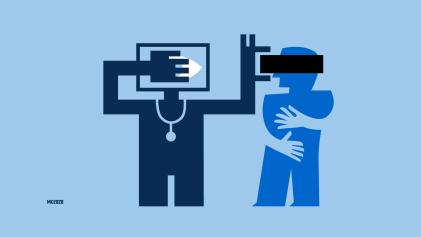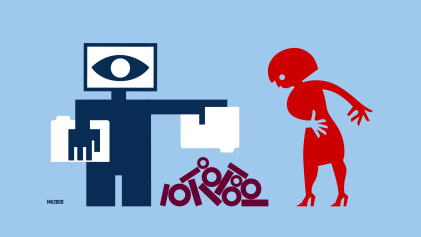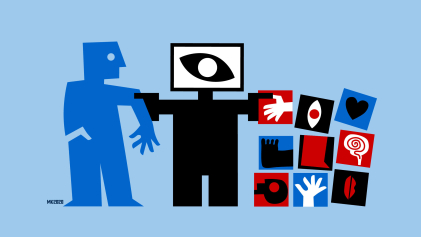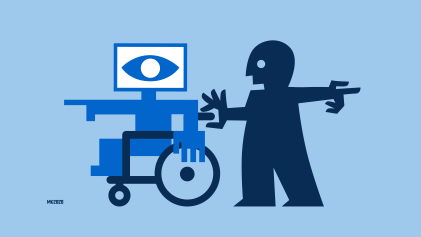Innovating with AI in healthcare: 'So people can participate in society'
In the blog series 'Healthy Bytes' we investigate how artificial intelligence (AI) is used responsibly for our health. In this eighth part Nico van Meeteren and Hanneke Heeres share their thoughts. They are respectively director and human capital coordinator at Top Sector Life Sciences & Health (LSH; Health~Holland). Top Sector LSH focuses on public-private partnerships for technological and social innovations for health and care. Responsible innovations arise from the idea that people are not merely ill or patients, but want to participate in society according to their wishes and ability.
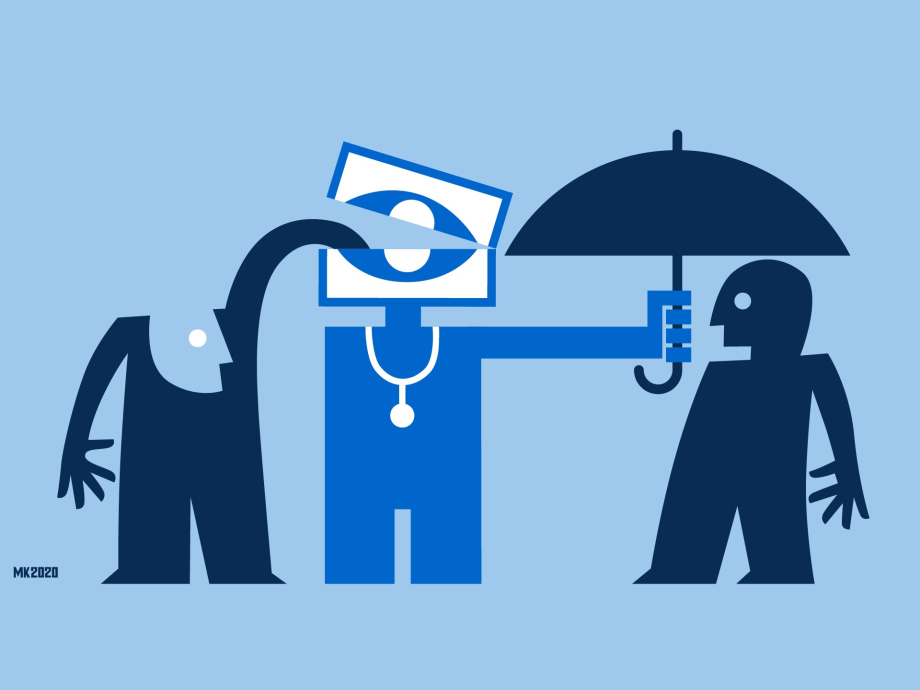
In short
- How is AI used responsibly for our health? That's what this blog series is about.
- In the vision of Top Sector Life Sciences & Health, care innovations should be aimed at enabling people to participate in society.
- The authors describe three steps to achieve this way of innovating for care and health.
Looking for good examples of the application of artificial intelligence in healthcare, we asked key players in the field of health and welfare in the Netherlands about their experiences. In the coming weeks we will share these insights via our website. How do we make healthy choices now and in the future? How do we make sure we can make our own choices when possible? And do we understand in what way others take responsibility for our health where they need to? Even with the use of technology, our health should be central.
Participation in society
Innovations with technology for our health are usually developed from the idea of healing and caring for people. But people are not only sick or patients. They are first and foremost partners, schoolchildren, parents, employees, employers, etc. In all these roles, they want to participate in society, despite illness or disability. Conversely, prevention and well-being are important for everyone, even if they are not (yet) patients. Let us, therefore, start thinking differently about innovation in healthcare. Health and technology should not be central; they are merely a means to facilitate people's participation in society.
People are not only sick or patients. They are first and foremost partners, schoolchildren, parents, employees, employers, etc.
In order to innovate differently for care and health, three steps are needed.
Step 1: Immerse yourself in the everyday environment
Innovating so that people can participate in society starts with getting to know everyday life. Empathize with people in their living environment. Also look at their behaviour in relation to their health. Then think about how technology can be appropriate and supportive. The crucial question is how technology, including artificial intelligence, can contribute to people's participation in society and at the same time serve their health.
Step 2: Bring developers and users of innovations together
Healthcare education is now often focused on symptom management. Students learn how to help a sick person, but not how they can contribute to prevention and a healthy life. At the same time, innovations are being developed for use within the healthcare sector, while the focus should be beyond this: on the functioning of the person in society and the prevention of health problems.
Healthcare professionals often do not know how to take advantage of innovations. Innovative companies have little or no role in the training of healthcare professionals, especially during the professional's working life. Care professionals should instead learn to select which innovations are useful. They should be able to advise which innovation best suits the patient's situation.
Innovations should therefore be developed in close cooperation with the end users: patients and clients, informal carers and healthcare professionals. This enables people to regulate their own health problems and work on prevention with the help of their environment, their own abilities and talents and a technological innovation.
Innovations should therefore be developed in close cooperation with the end users.
In order to bring developers and users of innovations together, Top Sector LSH is preparing for an Educational Health Deal. Under the supervision of the Ministry of Health, Welfare and Sport, the Ministry of Economic Affairs and Climate and the Ministry of Education, Culture and Science, agreements will be made for cooperation between innovative companies and educational institutions. So that the professionals of the future and the developers of innovations can exchange knowledge and insights more quickly.
Step 3: Make better use of data
In the third step towards innovating differently, artificial intelligence plays an important role. By combining data that people often collect themselves via, for example, their smartphone, an AI application can determine what a person needs in his or her life.
It doesn't exist yet, but the image of a future 3D pill printer makes this clear. Data from your diary, your lifestyle and your medical data together determine what you need to function optimally throughout the day. Built into such an imaginary 3D pill printer, next to your coffee machine on the counter, AI's technology can map out your personal health patterns and compile a daily pill for you. However, it is necessary that the user of such a 3D pill printer has access to clear and comprehensible information about their medication, for example through a video. The healthcare professional who prescribes the medication and bears responsibility for it must also remain involved - perhaps by maintaining access to the information from such an AI device.
The portable artificial kidney is another example of an AI application that contributes to 'participating in society'. This innovation ensures that kidney patients will no longer be tied to the hospital for regular kidney dialysis in the future. In this way, they experience more freedom in their daily lives: for example, they can go on holiday or have the opportunity to dialyze at work.
The portable artificial kidney is a good example of an AI application that contributes to 'participating in society'.
Safe and responsible
In order to develop AI innovations that really benefit people, it is necessary that all kinds of data can be combined. Data collected in different places must be secured and used to develop the right innovations. This must be done in a safe and responsible manner. Top sector LSH encourages initiatives that contribute to this.
A person cannot see whether the algorithm in that imaginary 3D pill printer is still working. Whether it still provides the right input to achieve the desired composition of the daily pill. If such a device fails, what do you do?
Precisely then a signal must be sent from the device to the healthcare professional. Safety, quality and other values must remain guaranteed. And when developing an innovation, the interests of the entrepreneur, the healthcare professional and the end user must be transparent.
Conclusion
It is about people, not health and technology. Health and technology should make it possible for people to participate in society. This idea is in line with the mission of the Ministry of Health, Welfare and Sport: to live longer in good health. Among other things, by offering changes in lifestyle and living environment and more care in the right place.
In order to promote this change in thinking, Top Sector LSH drew up the Knowledge and Innovation Agenda 2020-2023 Health & Care in 2019, together with public and private stakeholders. All actors involved in innovations for care and health must have the courage to learn how people can better participate in society. Only then will we arrive at responsible development and deployment of artificial intelligence.
